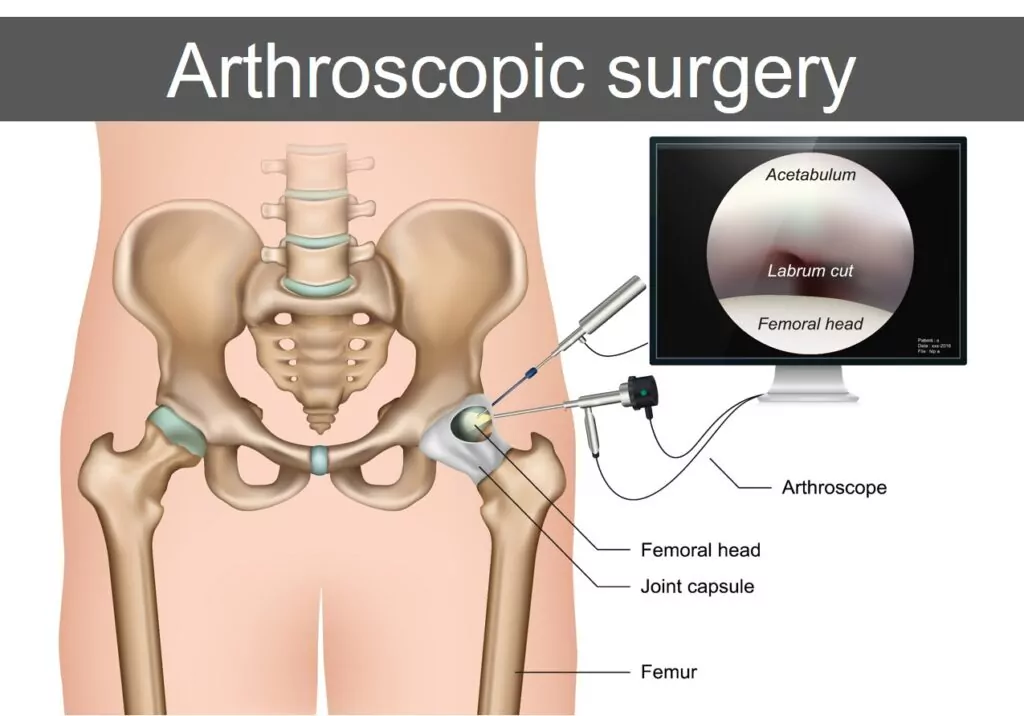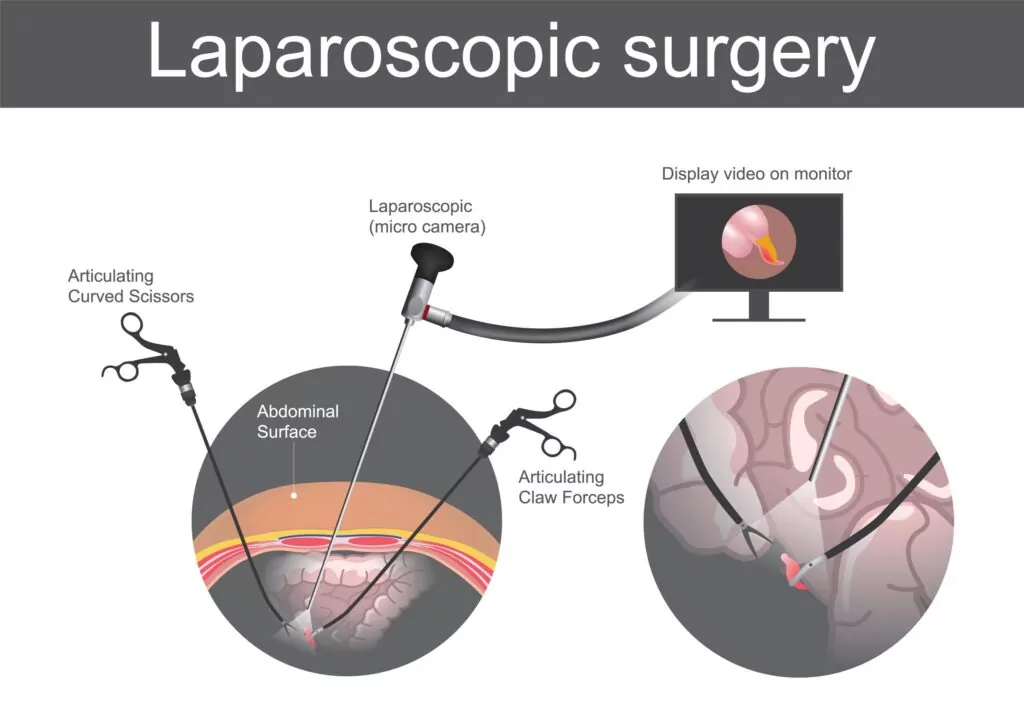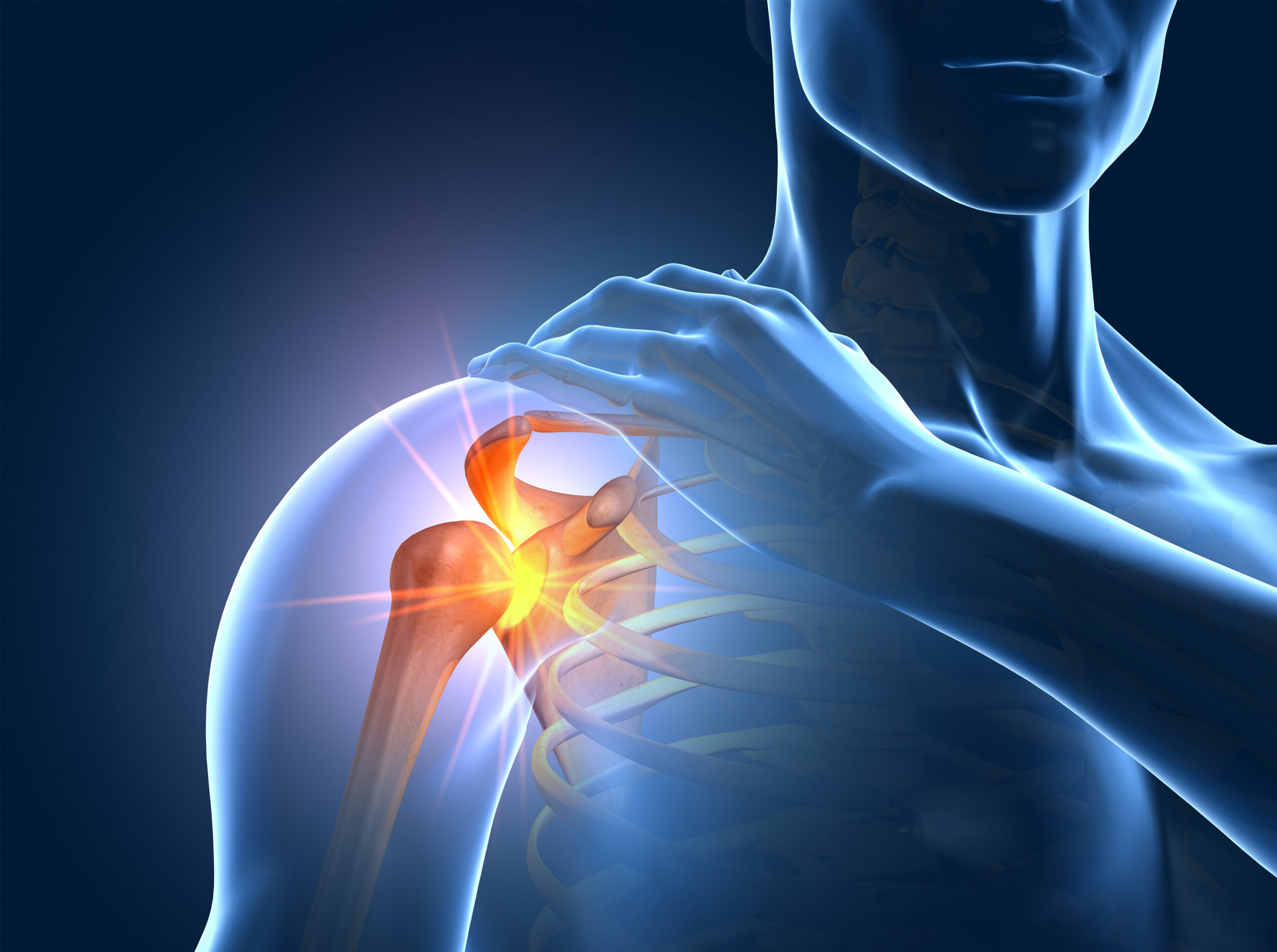Minimally Invasive Surgery
 For patients, ‘minimally invasive surgery’ means ‘smaller incisions than traditional surgery.’ Minimally invasive surgery is also known as a laparoscopic surgery, band-aid surgery, or keyhole surgery. At Colorado Springs Orthopaedic Group, our doctors prefer to use minimally invasive surgery whenever possible, as it is more beneficial for our patients’ overall success and recovery time.
For patients, ‘minimally invasive surgery’ means ‘smaller incisions than traditional surgery.’ Minimally invasive surgery is also known as a laparoscopic surgery, band-aid surgery, or keyhole surgery. At Colorado Springs Orthopaedic Group, our doctors prefer to use minimally invasive surgery whenever possible, as it is more beneficial for our patients’ overall success and recovery time.
The procedure for minimally invasive surgery consists of several small incisions (only a few millimeters long). Next, your surgeon will insert a small endoscope (a long, thin tube with a camera and light on the end) through one of the incisions. The endoscope displays the entire procedure on a large video screen to help your surgeon clearly ‘see inside your body.’ Once the endoscope is in place, your surgeon inserts small surgical tools through the other incisions. The instruments are so small that the surgeon operates the tools by remote control. When complete, the surgeon removes all the devices. Your incisions often do not require more than bandages to heal, and the risk of infection is minimal.

Recovery time after minimally invasive surgery is typically three times faster than traditional open surgery.
The recovery time for each patient can vary as it depends on the size and complexity of the procedure; however, it is often much shorter than traditional surgery.
Hospital Stay
The average hospital stay for minimally invasive surgery is substantially less than traditional surgery. For instance, the average hospital stay for someone who has recently had a minimally invasive spine surgery is less than 2 days compared to open spine surgery of 3 to 4 days. Depending on the type of surgery, for many, minimally invasive procedures are out-patient surgery where patients can return home the same day.
Minimally invasive surgery can cost thousands less than traditional surgery due to reduced hospital time, medications, and follow-up care. For most, surgery costs depend upon the complexity and severity of your medical condition. Additional fees may include anesthesia, hospitalization, physical therapy, and medications.
Costs with Insurance
Although your insurance provider likely covers the cost of most rehabilitative procedures, most elective procedures are not covered by insurance. Contact your insurance provider for coverage details. Please ask our office administration about financing and payment options.
Traditional Surgery vs. Minimally Invasive Surgery
With traditional surgery (or open surgery), the incisions are more extensive and take longer to heal. Stitches or staples are used to close the incisions and will have to be removed via a follow-up appointment. There is a higher risk of infection with traditional surgery because the incisions are much larger. Since traditional surgery requires larger incisions, the patient may experience more discomfort for a longer period. Thus, due to higher risks and longer recovery time, more and more surgeons opt for less invasive options if they can achieve the desired outcomes. At Colorado Springs Orthopaedic Group, our doctors choose minimally invasive surgery for our patients unless the procedure or patient is not the right candidate for minimally invasive surgery.
Advantages of Minimally Invasive Surgery
The primary benefit of minimally invasive surgery is that a patient can achieve the same results but with a lower chance of infection, less pain, minimal scarring, and faster recovery time.
At Colorado Springs Orthopaedic Group, we’re committed to optimal patient outcomes and safety. Our doctors have extensive experience, world-class training and are considered elite specialists in their field. (See Top Doc Awards)
To learn whether you would be the right candidate, speak with your orthopaedic surgeon.
Call (719) 632-7669 now to schedule your appointment.
Treatments
Minimally invasive surgery can be done on any joint, including shoulder, elbow, wrist, hip, knee, and ankle. Labrum surgery can even be used to repair torn tendons and is commonly used for total joint replacement surgery for sports injuries or arthritis. At Colorado Springs Orthopaedic Group, we may elect minimally invasive surgery for:
- Spine or back surgery
- Scoliosis surgery
- Hip surgery
- Bunion surgery
- Knee surgery
- Bone spurs
- Sports injuries
- Meniscus rotator cuff
- Knee meniscus
Benefits
Minimally invasive surgery has advantages over traditional surgery. The notable benefits are:
- Small incisions (5 to 10 millimeters)
- Less pain
- Less scarring
- Faster recovery
- Less blood loss
- Lower rate of complications
- Shorter or no hospital stay (outpatient procedure)
Commonly Used To:
- Repair torn tendons
- Replace total joints
Disadvantages
Some disadvantages of minimally invasive surgery are:
- It is a more complex procedure; therefore, it takes longer to perform than traditional surgery.
- There is a risk of trocar injuries caused by the insertion of the endoscopic and surgery tools. A trocar is a surgical instrument with a three-sided cutting point enclosed in a tube, used for withdrawing fluid from a body cavity.
Despite some disadvantages, minimally invasive surgery has high patient satisfaction rates, and many doctors recommend it over traditional surgery. Thus, when possible, more and more patients and doctors opt for minimally invasive procedures.
Types of Minimally Invasive Surgery
This technique was quickly adopted by specialists in varying medical fields. Orthopedic surgeons use the method to diagnose and treat joint injuries and diseases. There are two main procedure types, arthroscopic and laparoscopic surgery.

Arthroscopic Surgery:
Arthroscopic surgery, coming from the Greek word “artho” meaning “joint”, is a type of surgery for the joints and spine. Arthroscopic procedures may include surgeries of the hip, foot, ankle, knee, shoulder, elbow, and wrist. During the procedure, the surgeon inserts an arthroscope through a small incision, which allows them to see the joint area on a video screen. A small remote-control surgical device is then used to operate.

Laparoscopic Surgery:
“Laparo” means “flank, side” in Greek. With laparoscopic surgery, the surgeon uses an endoscopic tool called a laparoscope. It’s generally used for operations in the spine, abdomen or pelvis. Laparoscopic surgery may include treatment of wound infections, muscle tears, or hernia repair. Again, the surgeon uses a robot to perform the operation with small surgical tools.
You may experience discomfort post-surgery. Therefore, your surgeon will give you detailed recovery and self-care instructions. Prescribed medications and physical therapy may also aid in recovery.
One of the benefits of minimally invasive surgery is that it is usually an outpatient procedure, so you will likely not need to stay overnight. Though, you should always have a friend or relative to help you home after the procedure. Also, avoid strenuous activity for several days. Be sure to rest your body, drink plenty of fluids, and stay comfortable. Your doctor will let you know when you can resume full routine activities.
If you experience unusual pain or have complications, contact your doctor. Likewise, get immediate medical help for dizziness, nausea, or irregular heartbeat.
Risks exist with any type of surgery; however, the risks associated with minimally invasive surgery are significantly reduced because of the smaller surgical incisions. Lower risk and faster recovery rates are why doctors prefer this type of surgery to traditional open surgery. Although minimally invasive surgery is typically less risky than conventional surgery, there can still be complications with anesthesia, infection, bleeding, and minimal scarring.
Surgery is a serious medical consideration. Be sure to talk to your doctor about patient safety. It is always important to clarify the risks, beneficial outcomes, and complete medical history before opting for any surgery type.
Our Certified Doctors
At Colorado Springs Orthopaedic Group, we are one of Colorado’s largest and most respected orthopaedic practices. Our doctors are highly recommended, and we are known as one of the best centers for minimally invasive surgery. Our doctors have extensive experience in spine and various sports injuries, including total joint, knee scopes, sports injuries, and rotator cuff reconstruction.
Our Specialists for Minimally Invasive Surgery
 Michael J. Huang, MD
Michael J. Huang, MD
Doctor Huang is a board-certified orthopaedic surgeon. He is also a Colorado Springs Top Doc 2018. He specializes in sports injuries and total hips.
 Tyler R. Bron, MD
Tyler R. Bron, MD
Doctor Bron is a board-certified orthopaedic surgeon. He specializes in total knees and hips. Dr. Bron has additional training for using the unique CT-guided Mako Robotic Arm for knee replacements.
Is Minimally Invasive Surgery Right for You?
If you’ve been injured or suffer from pain, see a specialist as soon as possible. Sometimes ignoring pain or an injury can make it worse. Call to schedule an appointment with one of our specialists at Colorado Springs Orthopaedic Group. During your initial consultation, our board-certified orthopaedic surgeons work with you to devise the best medical plan.
As every patient and situation is different, surgery may or may not be the best answer.
To learn whether you would be the right candidate for minimally invasive surgery, speak with your orthopaedic surgeon.
Call (719) 632-7669 now to schedule your appointment.
 Michael J. Huang, MD
Michael J. Huang, MD Tyler R. Bron, MD
Tyler R. Bron, MD

